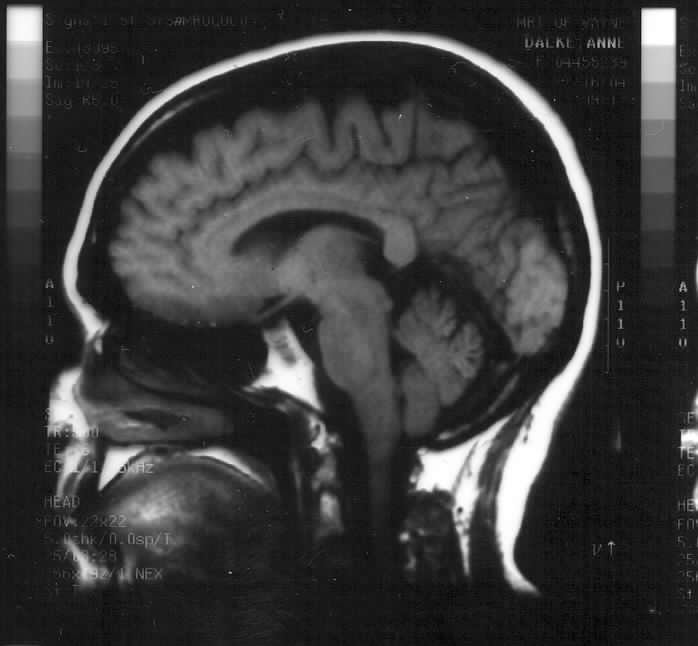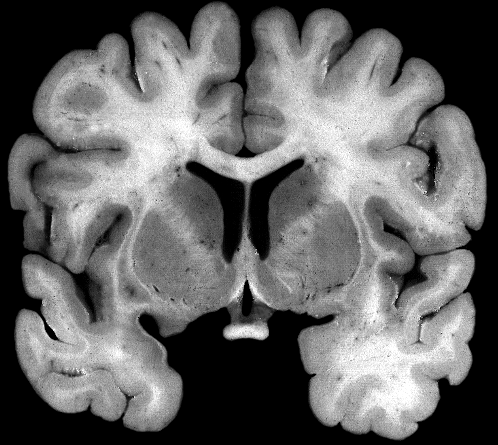Serendip is an independent site partnering with faculty at multiple colleges and universities around the world. Happy exploring!
Afterwords on Neuroscience (& Physics, & Science Education in General...)
Afterwords on Neuroscience
(and Physics, and Science Education in General....)
Judith: The brain story is a revelant part of everything we do....
we need to be aware of how we think and change the way that we perceive how others think...
Joyce: I'd like to involve my students in this investigational process...
as a periphery reflection of how we think.
Photos of Us Dissecting Brains (Ours and Others)

Frog Brain (not to scale!)
|

Anne's Brain (from the inside...)
|
In brief (courtesy of Paul Grobstein, "The Bipartite Brain...):
The human brain consists of a "frog brain" surrounded by a large amount of neocortex.
"It is an 'idealist' sitting on the back of a 'pragmatist.'"
Sensory inputs come into the unconscious.
They are turned into stories (=awareness, experiences, emotions, thoughts) "upstairs."
clear sense of the bi-partite nature of teaching, the need to "marry"
structure with open-ended inquiry.

Ben: I have seen from my experiences this year that a classroom requires structure and consistency to run efficiently. If things are always the same though then our students shut off....On one hand, students need to know what to expect from a teacher as well as what the teacher can expect from them. On the other, education should be interesting and engaging so it is important to find a balance between classroom routines and an investment in the learning process. I think it is possible to be consistent in the classroom without causing our students to shut down.
Rosemary: Today's class was a perfect example of the marriage between lecture and inquiry. Wendy had thought provoking questions throughout her lecture, especially when talking about a brain transplant....Ashley's lesson...really made everyone stop and think.It held our attention which isn't always easy after lunch.She mixed things up and had us moving.So we did not "stop paying attention because things were not the same."
Mary Ellen: I was fascinated by this morning's presentation. One of Wendy's exploration questions - "Is your consciousness the same as mine?" - keeps resonating in the back of my mind. When she stated that we often "tend to make that assumption about our students, but it's not our job to fill their brains," it connected with our inquiry learning conversations. It's engaging rather than filling minds that is key in creating the kind of classroom environments in which critical/analytical thinking intertwines with factual learning....Ashley's experiments engaged our small groups immediately in very comfortable conversations about the whys & hows of our particular activity.
Rita: Today's presentations and discussions sparked my interest more than anything I've experienced the past two week. So much so that I am in the process of changing My Blog which I almost had completed. The brain is such a sensitive instrument that controls our entire body. Our sensory sytem(s) could easily be shut down by a point of malfunction in the brain. After talking with Wendy, I have decided to do some research on learning to read and the process of learning to read. None of which would take place without the brain. Such fascination. Wish me luck.



Comments
Post new comment